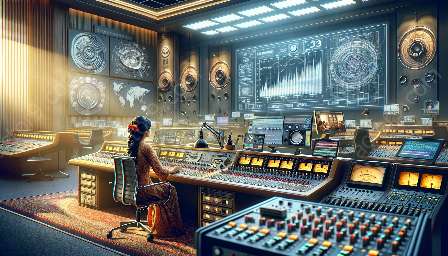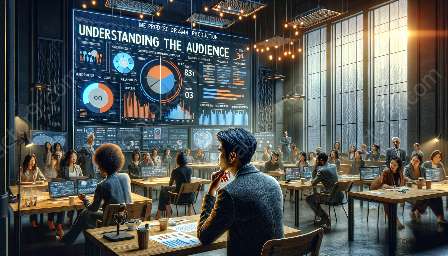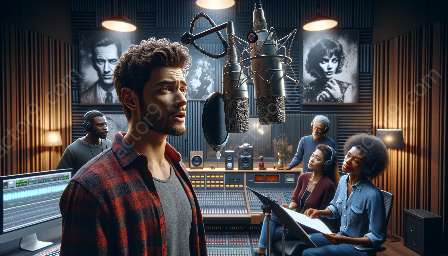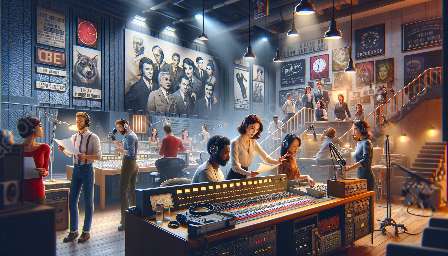When it comes to radio drama production, conveying spatial awareness through editing is crucial to create an immersive and realistic experience for the audience. This involves using various techniques to manipulate sound and create a sense of space, movement, and location within the confines of an audio-only format.
Understanding Spatial Awareness in Radio Drama
Conveying spatial awareness in radio drama requires careful planning and execution. Unlike visual mediums, radio drama relies solely on sound to create a mental picture and immerse the audience in the story's environment. To achieve this, the use of editing techniques plays a significant role in manipulating sound to convey a sense of space and location.
1. Panning and Spatial Placement
One of the primary editing techniques used to convey spatial awareness in radio drama is panning. By adjusting the spatial placement of sound elements within the stereo field, producers can create a sense of movement and location. For example, by moving a sound effect from left to right or vice versa, the listener can perceive the direction and movement of a character or object within the story's environment.
2. Environmental Sound Design
Editing techniques also encompass the use of environmental sound design to establish the spatial context of a scene. By layering ambient sounds, such as street noise, nature sounds, or room tone, the production team can create a realistic sonic environment that helps the audience visualize the setting and location of the story.
3. Fading and Crossfading
Smooth transitions and spatial continuity are crucial in radio drama production. Editors use fading and crossfading techniques to create seamless transitions between scenes or locations. By gradually fading in or out specific sounds or crossfading between different environments, the audience can seamlessly transition from one spatial context to another, enhancing their spatial awareness and sense of immersion.
Creating a Sense of Movement and Location
Besides conveying static spatial environments, radio drama editing can also create a sense of movement and location through various techniques.
1. Doppler Effect and Perspective Shifts
Editors utilize the Doppler effect to simulate the change in frequency of a sound as it moves towards or away from the listener. This technique is particularly effective in conveying moving objects or characters within the story's spatial landscape. Additionally, perspective shifts through sound manipulation can also create a sense of location and movement, allowing the audience to mentally track the characters' journey within the narrative.
2. Spatial Audio Effects
Advancements in audio technology have enabled the use of spatial audio effects, such as binaural recording and 3D sound processing, in radio drama production. These techniques can simulate spatial depth and dimension, allowing for a more immersive and realistic listening experience. By strategically placing and manipulating sound sources, producers can create a three-dimensional sonic environment that enhances spatial awareness and engagement.
Conclusion
Editing techniques in radio drama production play a vital role in conveying spatial awareness and creating a compelling auditory experience for the audience. By leveraging panning, environmental sound design, fading, perspective shifts, and spatial audio effects, producers can transport listeners into a rich and immersive sonic landscape, effectively bringing the story's spatial dimensions to life.






















